BY LETTER
Logistics
Technology > Application > Construction
Technology > Application > Manufacturing
Technology > Application > Megascale Engineering
Technology > Application > Transportation
Technology > Application > Manufacturing
Technology > Application > Megascale Engineering
Technology > Application > Transportation
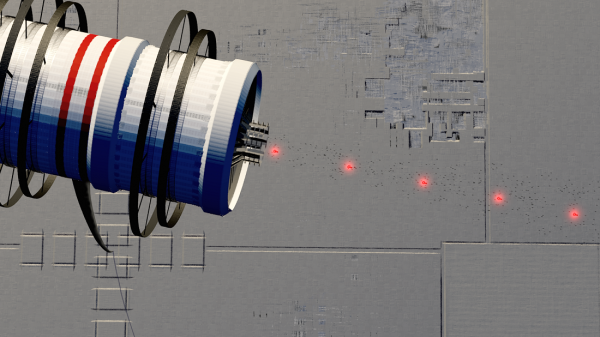 Image from Alex Mulvey | |
| A relay station receives material packets for the megastructure below | |
Warfare across interplanetary and interstellar distances faces many logistical problems, since any military mission must carry enough supplies to support its activities until such time that raw or salvaged materials can be commandeered along the way. The original context of the term, that of needing to keep a steady stream of supply to an established army, is less significant in the Current Era, since such supply chains are rarely viable over such vast distances.
Similarly the complications of creating an interconnected network of individually managed supply chains between various multi-body industries also has limited contemporary applicability, though this context can still be found across Terragen space. In the current era, transapients or their agents will often handle all the complications of a supply chain from origin to destination, even with innumerable continuously changing factors, and will do so effortlessly given their computing power. A transapient may delegate a brain node to a particular area to organize the local logistics chain segment and react to changes.
Even lower-tech logistical systems, those handled at the highest level by modosophonts, have a very high level of autonomy. Given the distances between even closely orbiting neighbors, along with the scarcity of material in open space, it is common that any close-knit established civilization run by modosophonts will have the ability to meet all of its energy and material needs internally. Similarly, while midtec civilizations must go to advanced means to create a given finished product from constituent resources, and require localized specializations to do so, today even basic interplanetary civilizations possess the ability to construct relatively anything from basic elements.
Logistical concepts as a whole throughout Terragen space maintain infinite variety. The transfer of mass within a single section of any given megastructure can be a complicated process worthy singularly of extensive analysis. There are a selection of basic methods which an initial extraction process may take, but once the given materials are at a destination, it is there that the potential for further logistical process grows exponentially. A frequent end result for a processed packet of raw material is to either be used in construction immediately by utility fog, or placed into a mattercache for later use.
At individual-use scales, the actual distribution of goods and services is typically fed directly to consumers in the form of autofabricators, which will draw material from a mattercache to create any tangible construct. As such the end result of a supply chain of the current era is not delivering a finished item to a consumer, but rather supplying the consumer with the necessary material to effortlessly construct the item emself.
Extraction
Projects which require logistical planning and support include the construction and maintenance of habitats and habitable megastructures; resources for life support in biospheres, stations and ecumenopoli; the raw materials required for processing substrates such as computronium nodes, moon-brains, planetary brains and stellar-scale intelligent superobjects such as Matriosha brains, and the construction and supply of interplanetary and interstellar craft.Resources for these projects can be extracted from molecular clouds and other nebulae, from asteroid belts and Oort clouds, the mining and disassembly of planets, from accretion disks around black holes and protostars, and from the atmospheric envelopes or interiors of stars via star mining and star lifting.
Often these extraction processes are accompanied by large amounts of waste heat, which may require the construction of large radiating surfaces of various kinds to assist with cooling.
Transportation
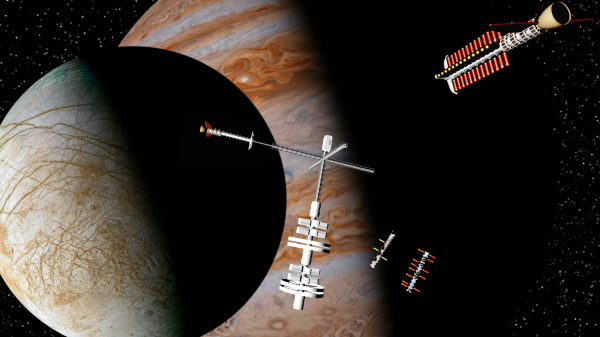 Image from Alex Mulvey | |
| An Interplanetary Age transportation operation near Europa | |
Other similar types of accelerators are applicable in other applications. There are various methods for getting material to space from gravity wells of planet or suprashell surfaces, the most common being launch ramps which accelerate the material along a track and release into space. This method requires large-scale static or at least semi-static infrastructure, and as such the operations on the surface will have a focus on centralizing the material towards a point at the beginning of the track.
Thrust propulsion methods are also utilizable for transportation. Many space-based mining operations such as those within an asteroid belt or planetary rings — or even world surface-based ones where the launched material is collected in space — will have centralized infrastructure for refining the material and preparing it for a mass stream catapult. The raw material is gathered from the general region and sent to the refinement zone using thrusters, as the material in its pre-processed state is not set up to be fired along a mass driver, and the associated short distances don't warrant their usage regardless.
Interstellar transportation can take two routes, either directly between stars or using established wormholes. Matter packets may be treated like any other ship in regards to wormhole travel, although on occasion some systems have dedicated wormholes (or at least dedicated routes for general use wormholes) that constant streams of exported material will take en route to another star system. Direct interstellar transportation will utilize the same methods as interplanetary, simply on larger scales. Civilizations may build larger and more dedicated infrastructure specifically for interstellar export.
Reception
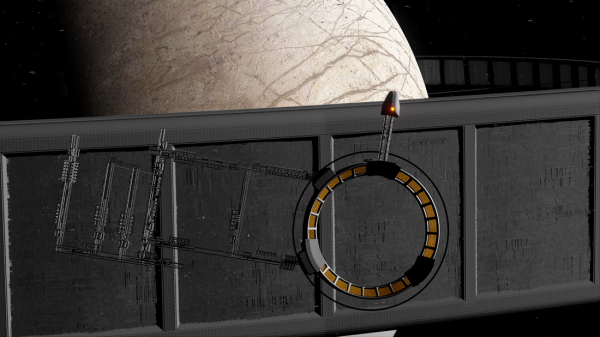 Image from Alex Mulvey | |
| A magnetic receiver relay near current-era Europa, one of millions in the region | |
Structures at smaller scales, up to the size of a few kilometers along any given axis, can potentially source their needed resources on demand from pre-harvested material kept in local orbital storage facilities. Nanoswarms (which may come with the material as a service or be present at the destination) may be utilized as construction crew to assemble the structures. These services are typically available on a case-by-case basis for the typical progressive expansion seen by any developing civilization as it encounters new necessities, such as in anticipation of colonist arrival or expansion, a transapient constructing new brain nodes, or virch relays to house new digital infrastructure.
At these scales, but where vast supply is not readily available, material will have to be allocated from extractors and sent directly to the destination. These operation conditions are common in early developing systems, and typically will have been planned out long in advance.
As the scale of projects increase, so does the required focus necessary to supply it. The larger the project, the more pre-allocated material needed to produce it. This typically involves either material straight from processing infrastructure directly to the needed location, or to a relay hub where the material is captured on its journey and stored for a short period of time before use.
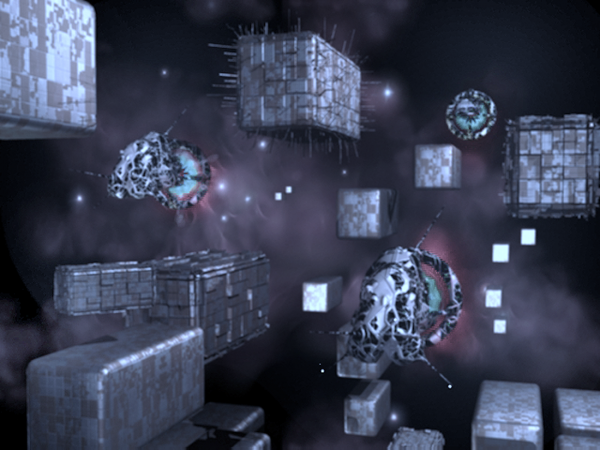 Image from Juan Ochoa | |
| Herders accompanying a stream of cargo | |
Limiting material packet streams to particular point-to-point routes has several advantages, whether the destination be anything from a Bishop Ring to a tight assemblage of rotating orbitals. Many supply chain distribution methods involve mass stream networks, with receiver stations at the destination acting as the brakes for streams of packets. An additional benefit of this consolidation is the minimized impact on other local traffic, as well as reduced clutter of the surrounding space. There is also the possibility that some aspect of the chain may fail to operate correctly. Aiming the matter streams at a point offset from an infrastructure project can help to ensure that the construct is not bombarded with packets should some aspect fail.
Transportation on the surface of a planet or megastructure
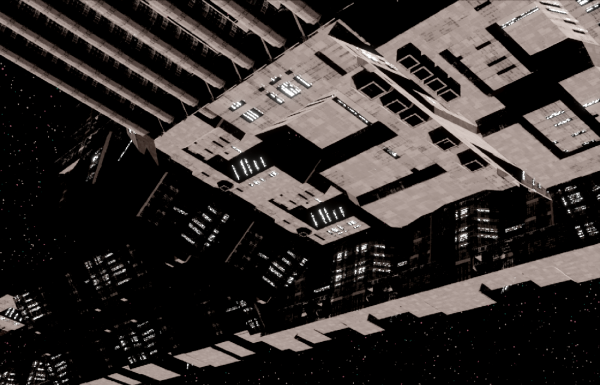 Image from Alex Mulvey | |
| The space underneath a habitable megastructure often supports multiple transport tubes carrying resources. | |
Vac-trains may also be found on the surface in many places, and a wide range of different railroad systems can be found throughout the Terragen Sphere, using different arrangements and gauges of rail.
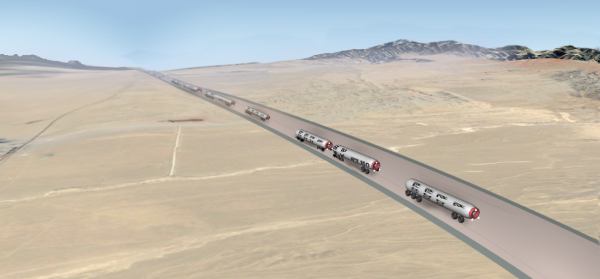 Image from Steve Bowers | |
| Sophont Cargorigs carry dangerous goods across the high plains of Zompah | |
Other forms of resource conveyance that may be encountered on many worlds are aircraft, from very small drones to giant cargo planes, swarmbots (which often carry vast amounts of material from mine or storage depot to the point of use) and rolling roads or conveyor belts which can carry resources for significant distances.
Transporting Megascale Objects in complete form
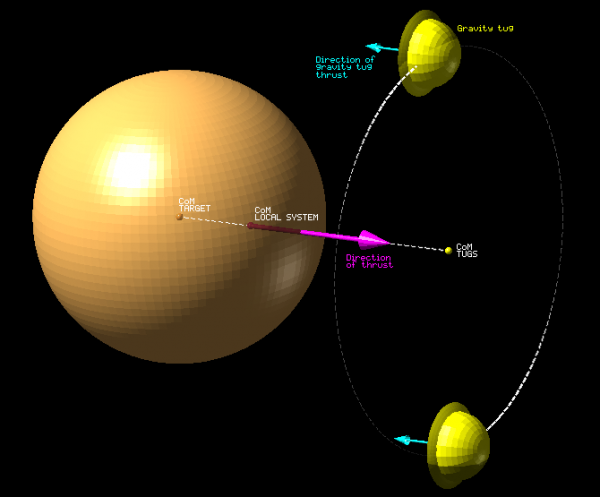 Image from Alex Mulvey | |
| A gravity tug system using two massive craft in orbit around a point forward of the asteroid itself. As the tugs exert thrust they drag the asteroid behind them, using the asteroid's own gravity | |
Planetary bodies are moved for a variety of reasons. Moons are sent into different orbits around their world or another, or turned into ships and taken across space. Worlds might be relocated for more preferable temperatures closer or further from a star, or to be disassembled and turned into an artificial construct within the new orbit.
To move such large objects requires very large scale propulsion systems, and often entails relatively gentle acceleration. Massive gravity tugs, mass streams and Stellar Propulsion systems can move large objects gradually, while more advanced technology such as halo swarms can be used to drag objects more rapidly.
Related Articles
Appears in Topics
Development Notes
Text by Alex Mulvey
Additional material by Steve Bowers
Initially published on 18 March 2021.
Additional material by Steve Bowers
Initially published on 18 March 2021.






